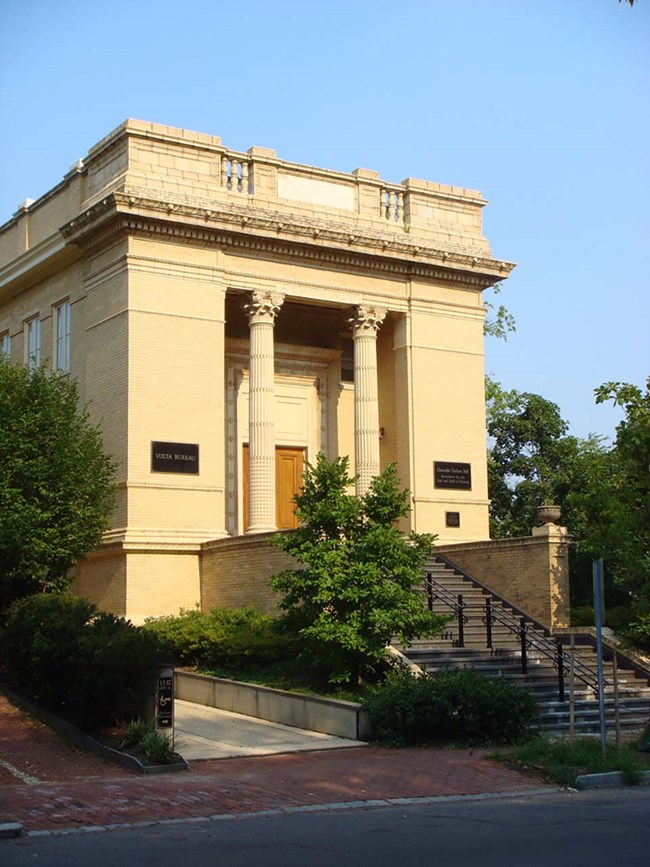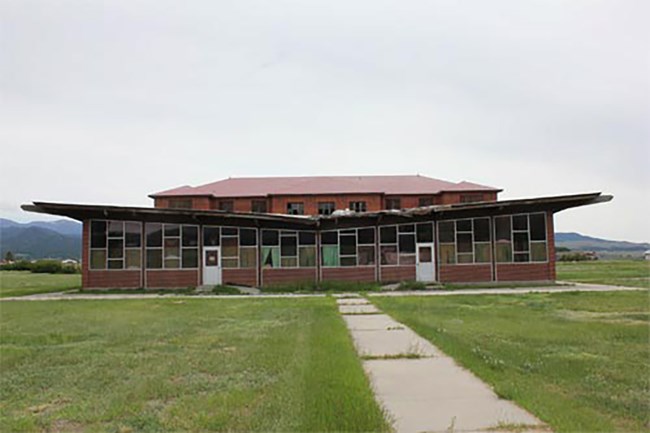Part of a series of articles titled Disability History: An Overview.
Article
Disability History: Educational Reform

Photo by Jonathan Coffey (CC BY-NC-ND-2.0; https://www.flickr.com/photos/decaf/769539941)
Education for people with disabilities developed in an era shaped by the Civil War, abolition, and scientific discoveries. These events impacted education and the reformers who pushed for it. The reform of education for people with disabilities in the 1800s was a reaction to the absence of educational opportunities for these populations.
Various historic places are associated with educational reform and how American society taught and teaches individuals with disabilities. Gallaudet University, originally named the National Deaf Mute College, opened in 1864 in Washington DC. Famed architects Olmsted, Vaux & Co. designed Gallaudet. This was and continues to be the only American university specifically for deaf people (though the National Technical Institute for the Deaf is a college that serves deaf individuals, as well). Gallaudet has contributed to the rights of the Deaf community into the 21st century. Read the article on the Disability Rights Movement for more information.
Samuel Gridley Howe and Alexander Graham Bell were among two promoters of educational reform for individuals with disabilities in the 1800s. They also helped research causes and possible cures for certain conditions. In 1832, Howe opened the Perkins School for the Blind in Massachusetts. As the first school for the blind in the US, the Perkins Institution (as it was then called) applied techniques inspired by European models. Howe developed an embossed letter system for blind people to read. This reading format was used until Braille came into common use by the late 1800s. Howe also worked with deaf students, though he opposed sign language as a method of communication. Instead, he preferred to teach lipreading and oral communication, a method known as oralism. Both Howe and Alexander Graham Bell preferred this method of communication, which would prove controversial in later years. Howe worked with famed students including Laura Bridgman and Helen Keller.
Keller met Howe through Alexander Graham Bell. Bell, the inventor of the first telephone in 1876, supported Keller's learning. Bell also worked as a speech trainer. In 1887, he founded the Volta Laboratory. The Laboratory served as an information center for deaf and hard-of-hearing persons. He advocated "for the increase and diffusion of knowledge relating to the Deaf." He also worked with an organization which is today known as the Alexander Graham Bell Association for the Deaf.
Like some physicians and politicians at the time, Bell supported eugenics as a means of eliminating disabilities. Eugenics was the misguided belief that controlling genetics could improve the human race. Though there were many who opposed eugenics, there were unfortunately several advocates for it beginning in the 1800s. Arguments for and against eugenics persisted well into the 1900s. Support of eugenics influenced many spheres, including education.

Photo by Kate Hampton, from the National Register of Historic Places Nomination.
The Montana State Training School Historic District shares some of this challenging history associated with eugenics. Built in the 1910s, this state-funded school provided education, treatment, and residential housing for children with intellectual disabilities. The physicians of the Montana State Training School also practiced forced sterilization, or the removal of one’s ability to have children, on certain patients. This was unfortunately a common practice in the early 1900s. In the mid- to late part of the 1900s, activists and politicians pushed to close these schools and programs. They advocated for new kinds of care, treatment, and education.
Education opportunities for people with disabilities have transformed in the 20th and 21st centuries largely because of federal legislation. The 1975 Education of all Handicapped Children Act and its amendments guaranteed free public education for all students with disabilities. The four purposes of PL 94-142 were to (1) “assure that all children with disabilities have available to them… a free appropriate public education which emphasizes special education and related services designed to meet their needs,” (2) “assure that the rights of children with disabilities and their parents… are protected,” (3) “assist states and localities to provide for the education of all children with disabilities,” and (4) “assess and assure the effectiveness of efforts to educate all children with disabilities.” In 1990, the Individuals with Disabilities Education Act (IDEA) replaced PL 94-142. Amendments to IDEA have continued to assist students with disabilities in a variety of classrooms. As the Department of Education has described, “Whereas Public Law 94-142 issued a national challenge to ensure access to education for all children with disabilities, the 1997 Amendments to IDEA articulated a new challenge to improve results for these children and their families… IDEA has been a primary catalyst for the progress we have witnessed.”[2]
Article by Perri Meldon.
This article is part of the Telling All Americans’ Stories Disability History Series. The series focuses on telling selected stories through historic places. It offers a glimpse into the rich and varied history of Americans with disabilities.
References:
[1] Helen Keller. My Key of Life. New York: Thomas Y. Crowell, 1926.
[2] https://www2.ed.gov/policy/speced/leg/idea/history.pdf
Last updated: October 31, 2017
